Oklahoma is understood for its diverse panorama and climate, which makes it a super area to develop a huge range of trees. However, with so many species to pick out from, it may be hard to know where to begin. When it comes to selecting the precise trees to your Oklahoma panorama, you want to discover a species this is both beautiful and adaptable to the neighborhood weather. In this publish, we’ll be highlighting a number of the top timber that will thrive in Oklahoma’s unique surroundings. From local types to distinctive imports, we’ll explore more than a few alternatives that will help you find an appropriate bushes for your panorama. Whether you’re seeking out shade, privacy, or sincerely including some splendor for your outside area, this manual will help you’re making the right choice.
Introduction to selecting the proper timber on your Oklahoma landscape
When it involves enhancing the beauty and usual appeal of your Oklahoma panorama, selecting the proper trees can make all of the difference. Not simplest do bushes offer coloration, privacy, and habitat for natural world, but additionally they add a hint of beauty and individual to any out of doors area. However, with the various climate and soil situations in Oklahoma, it is important to choose timber that are not best visually lovely but also adaptable to the local surroundings.
In this guide, we will discover some of the top tree alternatives that thrive in Oklahoma’s particular climate and soil conditions. Whether you are seeking out colourful fall foliage, stunning spring blooms, or year-round greenery, there may be a tree for every choice and motive. By selecting timber which can be nicely-suited to the region, you may make sure they will flourish and face up to the demanding situations that Oklahoma’s climate might also gift.
Before diving into the precise tree suggestions, it’s crucial to remember some key elements whilst deciding on the precise bushes on your Oklahoma panorama. Factors including the quantity of sunlight, soil kind, moisture degrees, and area available ought to all be taken into account to make certain superior boom and longevity. Additionally, thinking about the preferred cause of the tree, which includes coloration or ornamental enchantment, will assist narrow down the options and make an informed decision.
As an Amazon Associate we earn from qualifying purchases.
Table of Contents
Factors to take into account while deciding on trees on your Oklahoma panorama
When it comes to deciding on bushes in your Oklahoma panorama, there are several vital factors to don’t forget. Choosing the right trees could have a extensive effect on the general splendor and adaptableness of your outside area. Here are some key elements to keep in thoughts:
1. Climate: Oklahoma reports quite a few climate conditions, such as hot summers, bloodless winters, and robust winds. It is essential to pick out timber which could resist those climate challenges. Look for trees which might be hardy and might tolerate temperature fluctuations, drought conditions, and excessive winds.
2. Soil Conditions: Oklahoma has a numerous variety of soil types, including clay, loam, and sandy soils. Before deciding on trees, it’s far critical to assess the soil situations to your particular location. Some timber thrive in well-tired soils, while others can tolerate heavy clay or sandy soils. Understanding your soil type will assist you pick out timber that could thrive in your landscape.
Three. Water Requirements: Water availability is another essential attention while deciding on bushes. Oklahoma reviews periodic droughts, so it is beneficial to choose bushes which are drought-tolerant or have moderate water necessities. Native timber are frequently an amazing choice as they’ve tailored to the neighborhood weather and might resist dry durations.
Four. Size and Growth Habit: Consider the mature size and growth dependancy of the trees you’re considering. Some bushes may grow tall and huge, while others have a more compact or columnar form. Ensure that the trees you select will fit properly for your panorama without overpowering different vegetation or systems.
5. Maintenance: Different trees have different upkeep desires. Some timber require regular pruning, even as others are enormously low renovation. Consider the quantity of effort and time you are inclined to invest in the care of your trees when making your selection.
Top alternatives for beauty and adaptability in Oklahoma timber
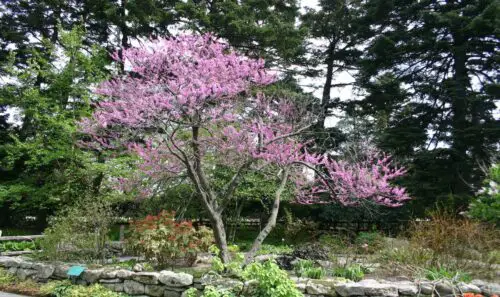
Oklahoma’s various climate and unique soil situations make it a tough environment for plenty trees to thrive. However, there are several tree species which have tested to be each lovely and adaptable to Oklahoma’s specific conditions. Whether you’re seeking to upload shade, beautify your landscape’s aesthetic appeal, or attract wildlife, those top choices are positive to fulfill your desires.
1. Redbud (Cercis canadensis): Known for its stunning show of vibrant purple plants in early spring, the Redbud tree adds a pop of color to any panorama. This native tree is fairly adaptable and may tolerate a extensive variety of soil situations. Its heart-formed leaves flip a vibrant yellow within the fall, developing a lovely autumnal scene.
2. Oklahoma redbud (Cercis reniformis): Similar to the Redbud, the Oklahoma redbud is a native tree that thrives within the country’s diverse climate. It capabilities deep pink plant life in early spring, making it a placing addition to any panorama. Its glossy, coronary heart-fashioned leaves add splendor during the growing season, and it transitions to a stunning yellow coloration inside the fall.
Three. Eastern Red Cedar (Juniperus virginiana): This evergreen tree isn’t handiest visually attractive but also surprisingly adaptable to Oklahoma’s weather. With its dense foliage and conical shape, it offers awesome privateness and windbreak. The Eastern Red Cedar is also acknowledged for its aromatic scent and attracts diverse chook species, making it a fave for birdwatchers.
4. Lacebark Elm (Ulmus parvifolia): This medium-sized tree offers a completely unique mixture of splendor and adaptability. Its special exfoliating bark provides texture and visible interest to the panorama, at the same time as its glossy dark inexperienced leaves provide coloration for the duration of warm Oklahoma summers. The Lacebark Elm is likewise resistant to Dutch elm disease, making it a dependable preference for lengthy-time period growth.
Five. Bald Cypress (Taxodium distichum): For those trying to add a touch of beauty to their landscape, the Bald Cypress fits the invoice perfectly. This deciduous conifer has feathery, vivid green foliage that turns a stunning coppery orange inside the fall. It prospers in moist situations, making it ideal for areas near ponds or water functions.
a. Redbud (Cercis canadensis)
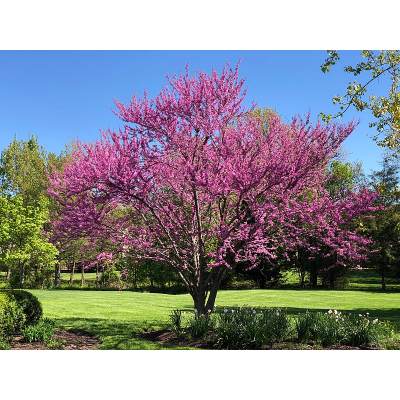
When it involves selecting the perfect bushes for your Oklahoma panorama, the Redbud (Cercis canadensis) undoubtedly merits an area on the pinnacle of your list. With its lovely display of colourful purple or purple flora in early spring, this native tree adds a pop of coloration and splendor to any outside area.
The Redbud is highly adaptable to Oklahoma’s climate, making it an superb desire for owners who want a low-renovation yet visually appealing tree. It thrives in each complete solar and partial shade, allowing you to plant it in various areas of your panorama. Whether you have a sunny outside or a shaded nook, the Redbud will flourish and beautify the aesthetic appeal of your own home.
One of the standout capabilities of the Redbud is its coronary heart-shaped leaves that emerge after the blossoming length. These smooth, dark green leaves create a lush canopy all through the summer months, imparting a fab and alluring color. As fall methods, the leaves remodel into a lovely display of yellow or golden colors, adding some other layer of visual interest in your landscape.
In addition to its decorative value, the Redbud additionally helps neighborhood wildlife. Its flora offer a source of nectar for bees and butterflies, inviting them into your garden and contributing to the ecological balance. Furthermore, its seeds and young twigs function a food supply for birds and small mammals, making it an green choice in your Oklahoma panorama.
b. Eastern Red Cedar (Juniperus virginiana)
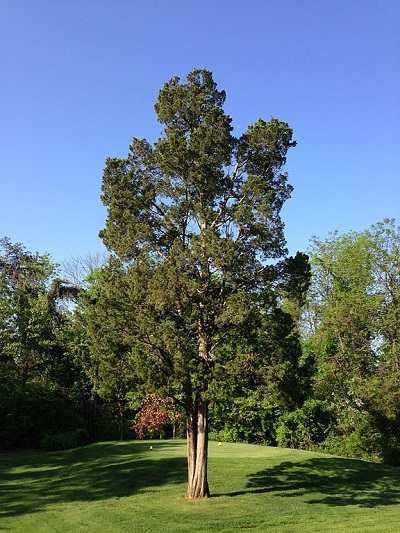
The Eastern Red Cedar, scientifically known as Juniperus virginiana, is a top select in relation to selecting the perfect trees to your Oklahoma landscape. This versatile evergreen tree isn’t always handiest visually attractive however also rather adaptable to the local climate and soil conditions.
One of the important thing reasons why the Eastern Red Cedar is fairly advocated for Oklahoma landscapes is its ability to withstand the state’s harsh weather situations. From scorching summers to freezing winters, this tree has verified its resilience time and time again. It can tolerate excessive temperatures, sturdy winds, and even drought situations, making it an excellent preference for owners and landscapers seeking out a low-upkeep tree.
In terms of aesthetics, the Eastern Red Cedar gives a lovely show yr-round. Its dense, dark inexperienced foliage offers an attractive backdrop for any panorama, developing a experience of privateness and including depth to the general design. Additionally, this tree produces small, bluish-pink berries that aren’t only visually appealing but also entice quite a few wildlife, which includes birds and butterflies.
Furthermore, the Eastern Red Cedar is particularly adaptable to exclusive soil sorts, which include clay, loam, and sandy soil. This adaptability permits it to thrive in numerous places for the duration of Oklahoma, from urban gardens to rural landscapes.
When it comes to size, the Eastern Red Cedar can range depending at the developing conditions. It commonly reaches a peak of 40 to 50 ft, with a variety of eight to 20 toes, making it suitable for both large and small yards. Its pyramidal shape adds an fashionable touch to any panorama, whether used as a focal point or as part of a screening or windbreak.
c. American Elm (Ulmus americana)
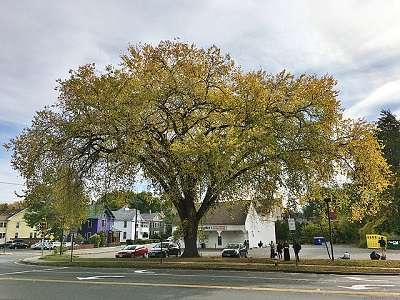
When it involves choosing the perfect timber on your Oklahoma landscape, the American Elm (Ulmus americana) is a pinnacle pick that brings each splendor and adaptableness to any outdoor space.
The American Elm is a staggering tree regarded for its iconic vase-shaped crown and unique, arching branches that provide a graceful and elegant silhouette. Its leaves are oval-fashioned, with serrated edges, and have a colourful inexperienced color that provides a touch of freshness to any landscape.
One of the remarkable traits of the American Elm is its adaptability to diverse soil types and growing conditions. Whether your soil is sandy, loamy, or clay-based totally, this tree can thrive and flourish. It can tolerate both wet and dry situations, making it an tremendous desire for Oklahoma’s unpredictable climate styles.
In addition to its adaptability, the American Elm is likewise noticeably resistant to pests and illnesses, including Dutch elm disorder, which has decimated many elm species in the beyond. This resilience guarantees that your landscape will remain healthy and colourful for years yet to come.
Furthermore, the American Elm affords adequate color with its extensive cover, making it best for developing a groovy and welcoming out of doors environment. Whether you are trying to create a serene spot for relaxation or a shaded location for outdoor gatherings, this tree has you included.
If you are concerned about the environmental effect of your landscaping picks, the American Elm is an green alternative. It acts as a carbon sink, soaking up and storing carbon dioxide, hence helping to mitigate climate change.
d. Oklahoma Redbud (Cercis reniformis)
The Oklahoma Redbud, scientifically referred to as Cercis reniformis, is a beautiful tree this is native to the state of Oklahoma. It is incredibly seemed for its splendor and adaptability, making it a pinnacle select for owners and landscapers alike.
One of the maximum placing functions of the Oklahoma Redbud is its vibrant and showy flowers. In early spring, before the tree leafs out, it bursts right into a large quantity of red to red plant life, growing a captivating show. These blossoms not most effective add a pop of coloration on your landscape but additionally entice pollinators consisting of bees and butterflies, enhancing the overall biodiversity of your lawn.
In addition to its aesthetic appeal, the Oklahoma Redbud is tremendously adaptable to numerous soil conditions, making it an super preference for Oklahoma’s numerous landscapes. It can thrive in each properly-drained and clay soils, making it suitable for a huge variety of lawn settings. This adaptability additionally makes it a hardy tree which can face up to Oklahoma’s unpredictable climate, such as durations of drought and extreme temperature fluctuations.
Another exceptional characteristic of the Oklahoma Redbud is its attractive heart-shaped leaves, which emerge after the flowers fade. These smooth inexperienced leaves provide a stunning backdrop for the vegetation in the course of the spring and rework right into a vibrant yellow in the fall, including some other layer of visual interest to your landscape throughout the yr.
Furthermore, the Oklahoma Redbud is a especially small tree, typically accomplishing a top of 20 to 30 ft and spreading to a similar width. This compact size makes it suitable for both small and massive yards, as it may be without problems included into diverse garden designs, consisting of as a focal point, border, or at the same time as a part of a naturalistic wooded area planting.
e. Eastern Redbud (Cercis canadensis var. Texensis)
The Eastern Redbud, scientifically known as Cercis canadensis var. Texensis, is a beautiful local tree that is well-acceptable for Oklahoma landscapes. With its colourful crimson or purple blossoms, the Eastern Redbud provides a burst of coloration to any garden or outdoor.
One of the maximum appealing functions of the Eastern Redbud is its adaptability to numerous soil situations. It can thrive in each dry and wet soils, making it an high-quality desire for Oklahoma’s unpredictable weather styles. This tree additionally reveals true tolerance to heat and drought, which is vital on this location.
In phrases of size, the Eastern Redbud typically reaches a peak of 20 to 30 toes, making it ideal for small to medium-sized yards. Its spreading crown affords a sleek, umbrella-like shape and creates a visually alluring focal factor in any landscape.
Another gain of selecting the Eastern Redbud is its potential to draw wildlife. The blossoms serve as a valuable supply of nectar for bees and butterflies, making it a pollinator-pleasant choice. Additionally, the tree’s attractive coronary heart-formed leaves provide refuge for birds and different small animals.
When it comes to renovation, the Eastern Redbud is especially low-protection. It requires minimal pruning and is generally proof against pests and diseases. However, normal watering in the course of dry spells is recommended to make sure its foremost boom.
f. Blackjack Oak (Quercus marilandica)
The Blackjack Oak, scientifically known as Quercus marilandica, is a wonderful tree that thrives in the numerous panorama of Oklahoma. This deciduous tree is noticeably seemed for its particular characteristics and capacity to conform to diverse soil types and growing conditions.
One of the maximum placing capabilities of the Blackjack Oak is its extraordinary, deeply furrowed bark, which resembles the styles observed on a blackjack game desk – as a result its name. This rugged and textured bark adds an detail of visual hobby to any landscape, making it a popular desire for homeowners and landscapers alike.
In terms of size, the Blackjack Oak commonly reaches a peak of 40 to 50 feet, with a range of round 30 to 40 feet. Its compact, rounded crown presents ample coloration and creates a comfy environment in out of doors areas. Whether you are looking to create a tranquil seating region or a shaded picnic spot, the Blackjack Oak can fulfill your vision.
When it involves adaptability, the Blackjack Oak definitely shines. It is nicely-ideal to Oklahoma’s tough climate, as it is exceedingly tolerant of drought, warmness, and terrible soil conditions. This resilience makes it an excellent preference for homeowners who need a low-upkeep tree that could resist the region’s unpredictable climate styles.
In phrases of foliage, the Blackjack Oak boasts glossy, darkish green leaves that flip a beautiful russet-purple color inside the fall. This vibrant show of autumnal colorings adds a hint of seasonal appeal to any landscape, growing a picturesque scene that captivates onlookers.
Additionally, the Blackjack Oak affords treasured habitat and meals resources for lots of wildlife. Its acorns appeal to squirrels, deer, and numerous fowl species, making it a valuable addition to Oklahoma’s surroundings.
g. Chinese Pistache (Pistacia chinensis)
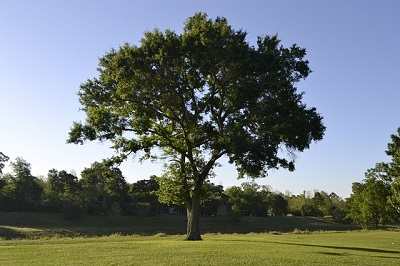
The Chinese Pistache, scientifically known as Pistacia chinensis, is an awesome desire for including each beauty and adaptability for your Oklahoma landscape. This medium-sized tree boasts a lovely show of vibrant fall hues, making it a standout characteristic in any garden or backyard.
One of the key advantages of the Chinese Pistache is its adaptability to various soil sorts, together with clay and alkaline soils, which might be typically observed in Oklahoma. This tree is likewise pretty tolerant of drought situations, making it a great suit for the country’s now and again tough weather.
In the spring, the Chinese Pistache showcases clusters of small yellow-inexperienced plants, adding a touch of beauty to its overall appearance. As summer arrives, the tree’s lush foliage provides a clean color, growing a snug retreat on your out of doors space.
However, it is in the course of the autumn months that the Chinese Pistache truely shines. The leaves remodel into a symphony of vibrant shades, starting from fiery reds and oranges to deep purples. This breathtaking colour display is sure to captivate and enhance the visual appeal of your panorama.
Besides its aesthetic enchantment and adaptability, the Chinese Pistache also offers practical blessings. It is a enormously low-protection tree, requiring minimal pruning and care. Additionally, its dense canopy provides top notch coloration, decreasing the need for immoderate watering and supporting to hold your strength payments decrease in the course of hot summer months.
h. Bald Cypress (Taxodium distichum)
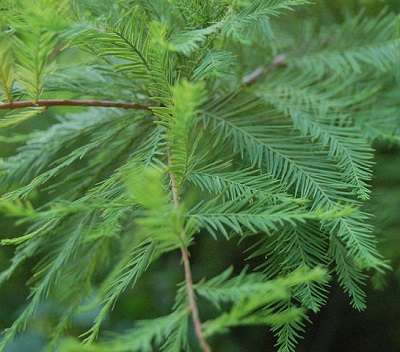
Bald Cypress, scientifically called Taxodium distichum, is an tremendous tree that can bring each beauty and adaptability in your Oklahoma landscape. This deciduous conifer is local to the southeastern United States, such as elements of Oklahoma, and is a famous choice for owners and landscapers alike.
One of the standout capabilities of the Bald Cypress is its specific appearance. With a tall, straight trunk and feathery, fern-like foliage that turns a beautiful reddish-brown in the fall, this tree adds a touch of beauty to any panorama. Its delicate leaves create a light and ethereal texture, that could offer a lovely contrast to other tree species in your garden.
What makes the Bald Cypress certainly unique is its adaptability to diverse developing situations. It flourishes in wet areas, making it a really perfect preference for locations with bad drainage or close to ponds, lakes, or streams. In truth, it’s far often known as the “swamp cypress” due to its potential to thrive in waterlogged environments. However, it may also tolerate dry conditions as soon as mounted, making it a versatile option for exclusive areas of your yard.
Another top notch attribute of the Bald Cypress is its sturdiness. It is particularly proof against pests, illnesses, and even fireplace, making it a low-renovation choice for owners. This tree can withstand sturdy winds and is understood for its resilience, making it a reliable choice for Oklahoma’s unpredictable weather patterns.
In addition to its aesthetic appeal and adaptableness, the Bald Cypress additionally affords ecological advantages. Its full-size root gadget allows stabilize soil and prevent erosion, making it an top notch desire for areas susceptible to erosion problems. Furthermore, its dense foliage affords color and acts as a herbal air cleanser, improving the general air excellent in your environment.
i. Eastern Redbud (Cercis canadensis var. Canadensis)
The Eastern Redbud, scientifically known as Cercis canadensis var. Canadensis, is a stunning tree this is local to Oklahoma and extensively diagnosed for its splendor and flexibility. With its vibrant pink or purple blooms that cover the branches in early spring, it provides a burst of coloration to any landscape.
This deciduous tree generally reaches a height of 20 to 30 feet, making it an excellent preference for each residential and commercial landscapes. Its spreading, rounded cover offers enough colour in the course of the hot Oklahoma summers, growing a fab and alluring out of doors space.
One of the terrific functions of the Eastern Redbud is its capability to thrive in a number of soil types, including clay and loam. This adaptability makes it a versatile preference for house owners who may have different soil conditions of their yards. Additionally, it’s miles tolerant of drought once hooked up, making it a low-protection option for busy people.
In addition to its aesthetic enchantment and adaptableness, the Eastern Redbud also advantages local wildlife. Its vegetation appeal to pollinators along with bees and butterflies, contributing to the overall environment health. Furthermore, the tree produces small, pea-like pods that serve as a meals supply for birds and small mammals.
When choosing timber for your Oklahoma landscape, the Eastern Redbud is surely a pinnacle pick out for its splendor, adaptability, and ecological advantages. Whether you plant it as a specimen tree or as a part of a bigger planting scheme, this local gem will virtually beautify the visible attraction of your out of doors area whilst thriving in Oklahoma’s precise weather.
j. American Sycamore (Platanus occidentalis)

The American Sycamore, scientifically called Platanus occidentalis, is an imposing tree that possesses both splendor and adaptability, making it a awesome preference in your Oklahoma panorama. With its hanging look and extremely good traits, the American Sycamore is certain to enhance the aesthetic enchantment of your outside area whilst thriving inside the specific weather of Oklahoma.
One of the maximum distinct features of the American Sycamore is its exfoliating bark. Its outer layer peels off to show a creamy white or mild brown inner bark, developing a lovely comparison against the backdrop of the encompassing panorama. This peeling bark now not only provides visible hobby but also gives a unique texture that sets the American Sycamore other than other timber.
In phrases of size, the American Sycamore is known for its grandeur. It can attain astounding heights of as much as a hundred toes, with a cover spread of 60 to 70 ft, making it an terrific desire for imparting color in large outdoor spaces. The big, palmately lobed leaves of the American Sycamore in addition make a contribution to its splendor, turning vibrant shades of yellow and brown inside the fall, creating a panoramic show of autumn colorings.
Adaptability is every other key function of the American Sycamore, making it properly-ideal for the various climate situations of Oklahoma. This tree is understood for its ability to withstand each drought and flooding, making it a resilient desire for landscapes that revel in fluctuating climate styles. The American Sycamore additionally reveals a high tolerance for numerous soil types, including clay, loam, and sand, similarly improving its versatility in extraordinary environments.
Beyond its aesthetic enchantment and adaptability, the American Sycamore also gives ecological benefits. Its dense foliage affords shade and refuge for various flora and fauna species, making it an appealing addition to any herbal habitat or natural world lawn. Additionally, the tree’s enormous root machine helps stabilize soil, stopping erosion and promoting water absorption, which may be particularly useful in regions liable to heavy rainfall.
Best practices for planting and being concerned for trees in Oklahoma
When it comes to planting and being concerned for timber in Oklahoma, there are some high-quality practices to keep in thoughts to make certain their top-quality boom and fitness. The particular climate and soil conditions on this location require cautious consideration and attention.
Firstly, it’s miles vital to choose tree species which might be properly-tailored to Oklahoma’s weather. Some top picks for splendor and flexibility in this vicinity encompass the Redbud, Eastern Red Cedar, Live Oak, Bald Cypress, and Hackberry. These timber have shown resilience in Oklahoma’s various climate styles, such as hot summers and bloodless winters.
Before planting, it’s far vital to put together the soil properly. Oklahoma’s soil has a tendency to be clayey and alkaline, which can avert root boom and nutrient absorption. To triumph over this, bear in mind amending the soil with organic be counted, including compost or nicely-rotted manure, to enhance its shape and drainage abilities.
When planting the tree, dig a hole that is extensive and shallow, as opposed to deep, to inspire horizontal root growth. Be certain to cast off any rocks, roots, or particles from the hole, as those can hinder root improvement. It is likewise important to position the tree successfully, thinking about its mature size and proximity to other systems or flowers.
Proper watering is crucial for the establishment and increase of newly planted timber. Water deeply and infrequently, allowing the soil to dry out slightly between waterings. This promotes deep root growth and helps the tree withstand drought situations. However, be careful not to overwater, as immoderate moisture can cause root rot and other sicknesses.
Regular pruning is essential to maintain the fitness and structure of the timber. Prune any useless, broken, or crossing branches to prevent ability risks and improve air movement. It is recommended to prune in the course of the dormant season to minimize pressure at the tree.
Lastly, display and cope with any pest or disorder problems right away. Oklahoma is home to diverse tree pests and sicknesses, such as bagworms, webworms, and o.K.Wilt. Regular inspection and early intervention can assist prevent vast damage to the trees.
Additional concerns and hints for deciding on bushes in Oklahoma
When deciding on bushes for your Oklahoma landscape, there are some additional issues and guidelines that let you make the proper preference.
1. Climate and Soil Conditions: Oklahoma’s climate can vary greatly, from hot summers to cold winters and everything in among. It’s crucial to choose trees which are properly-perfect to the specific weather of your vicinity. Additionally, Oklahoma has a variety of soil types, so knowledge the soil situations in your area is crucial for ensuring the achievement of your bushes. Conducting a soil check can offer treasured records about the pH stage, nutrient content, and drainage of your soil, that can manual you in selecting bushes so that it will thrive in those situations.
2. Drought Tolerance: Oklahoma is known for its periodic droughts, so deciding on trees which are drought-tolerant can help make sure their survival at some point of dry spells. Look for species which have tailored to arid conditions and feature deep root structures that can get right of entry to water from deeper soil layers.
Three. Wind Resistance: Oklahoma reports strong winds, mainly at some stage in extreme weather activities. Choosing trees which have a sturdy and sturdy structure can assist minimize the risk of damage from excessive winds. Look for bushes with flexible branches and strong root systems that could anchor the tree securely in the floor.
Four. Native and Adapted Species: Native timber are well-tailored to the nearby climate, soil situations, and pests in Oklahoma. They are frequently greater resilient and require much less maintenance as compared to non-native species. Consider incorporating local timber together with Eastern Redbud, Blackjack Oak, or American Sycamore into your panorama for his or her splendor and adaptability.
Five. Size and Growth Rate: Consider the mature length of the bushes you pick out and how they’ll healthy into your landscape. Planting bushes which might be too big to your space can result in troubles with crowding or interference with buildings and infrastructure. Additionally, some trees have quicker boom quotes than others, so keep in mind how speedy you want your landscape to fill in and choose as a consequence.
Final thoughts on deciding on the best trees on your Oklahoma panorama
In end, selecting an appropriate bushes for your Oklahoma landscape requires careful consideration of each splendor and adaptability. By choosing timber that thrive inside the particular weather and soil situations of Oklahoma, you could create a stunning and sustainable landscape with a view to flourish for years to come.
Remember to evaluate the particular wishes of your panorama, inclusive of sunlight publicity, soil moisture, and space availability, before making your final selection. By knowledge these elements, you may pick out trees to be able to no longer best decorate the classy attraction of your home however additionally face up to the challenging climate situations that Oklahoma regularly reports.
Additionally, take into account the preferred traits of the trees, such as their length, shape, and foliage color. Whether you pick colourful fall hues, graceful shapes, or yr-spherical greenery, there is a tree species that suits your alternatives.
Consulting with local arborists or horticultural experts can offer precious insights and hints for the pleasant tree species on your unique region. They can manual you in selecting bushes which can be local to Oklahoma or have proven adaptability to the location.
Lastly, bear in mind that tree selection is a long-time period funding. The bushes you choose these days will develop and mature over the years, becoming quintessential parts of your panorama. Therefore, take the time to make knowledgeable selections and pick timber a good way to not handiest meet your modern-day wishes but additionally convey joy and splendor on your Oklahoma landscape for generations to come.
© 2024 Lotusmagus.com. All rights reserved. This content is protected by copyright. Visit Lotusmagus.com for more information.

